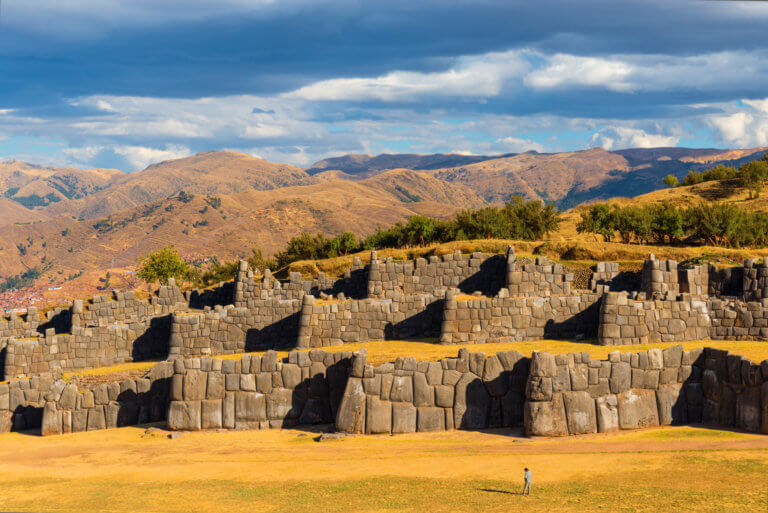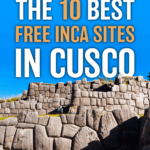If you’re visiting Peru, you should go to Machu Picchu, but there are hundreds more fascinating archeological sites in the Cusco region. Here are 10 amazing Inca archeological sites in the city of Cusco – and best yet, they’re all free!
Each one is accessible by foot, so you don’t even need to pay for transportation. While this list will give you a good start, there are also many archeological sites in Cusco that aren’t free. One way to see several of these sites is the City Tour, offered by dozens of agencies in Cusco. Some of the paid sites on the City Tour like Sacsayhuaman, can also be viewed for free without entering the site. The photos in this article are all taken from areas that are free to access.
If you’re new to high altitude, you should minimize physical activity for the first day or two, including walking. A great option for seeing the city while acclimatizing is an open top bus. This gives you the opportunity to see many of Cusco’s sights without any walking.
These ten sites are not in order of importance, but in order of how best to visit them on foot. In one day, you can visit the Plaza de Armas, the Qoricancha, Kusicancha, Hatun Rumiyoc, the Sapantiana Aqueduct and Sacsayhuaman. Another route takes you to the Monkey Temple, Temple of the Moon, Inkilltambo, Inca Kilns and Huchuy Choquequirao. Either of these routes can be done in a leisurely full day, with a picnic lunch, or quickly in half a day. If you choose a half day, I recommend making sure you are already acclimatized to the altitude, starting in the morning, and taking plenty of water and snacks with you.
1. Plaza de Armas de Cusco
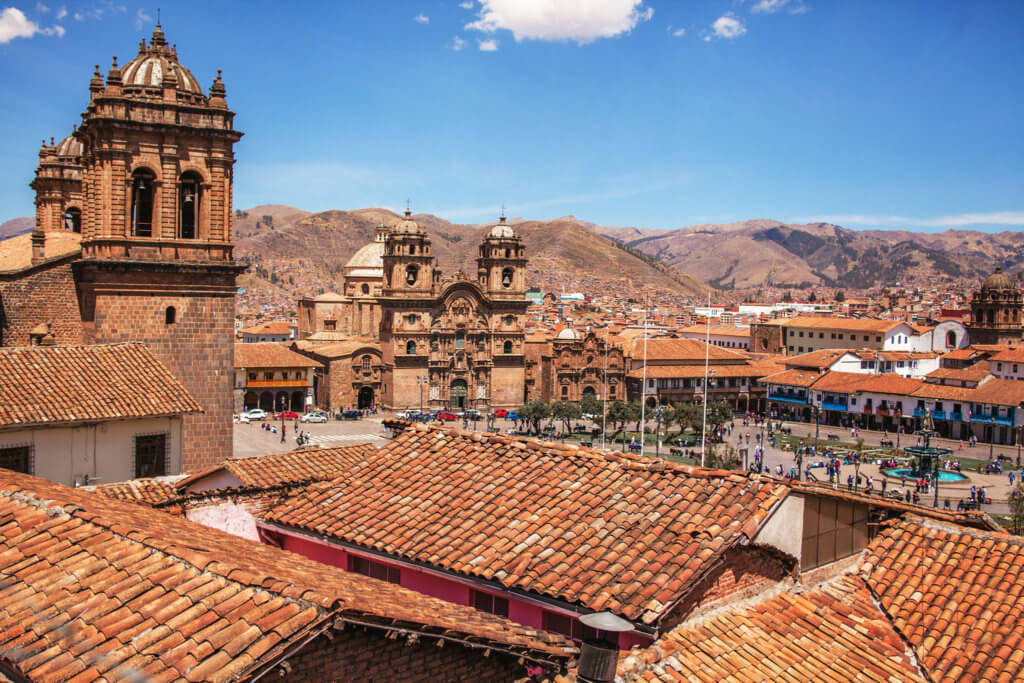
There’s no better way to start your exploration of Cusco than with the Plaza de Armas. At first glance, it may seem all colonial, but look closer. A statue of the Inca Pachecutec has been placed on top of the colonial fountain at the center of the plaza. Also, in the grassy areas around the plaza are giant Inca stones. They serve as decoration now, but they were once part of the Inca buildings that surrounded the plaza.
The original name of the space was Haukaypata and it was used for all kinds of celebrations and ceremonies during Tahuantinsuyu. Peruvian historians argue that the Inca Empire is more accurately called Tahuantinsuyu, which means “four regions.” The Incan organization of their government and society was so different from the empires of Europe and Asia that “empire” doesn’t really describe Tahuantinsuyu.
There are often events, parades, markets, and festivals in the Plaza de Armas. On very rare occasions, the police may close it to prevent large-scale protests, but otherwise it is accessible 24/7. The stone streets are relatively smooth, so the whole plaza is wheelchair accessible. For more in-depth history, try an informative walking tour.
2. Qoricancha
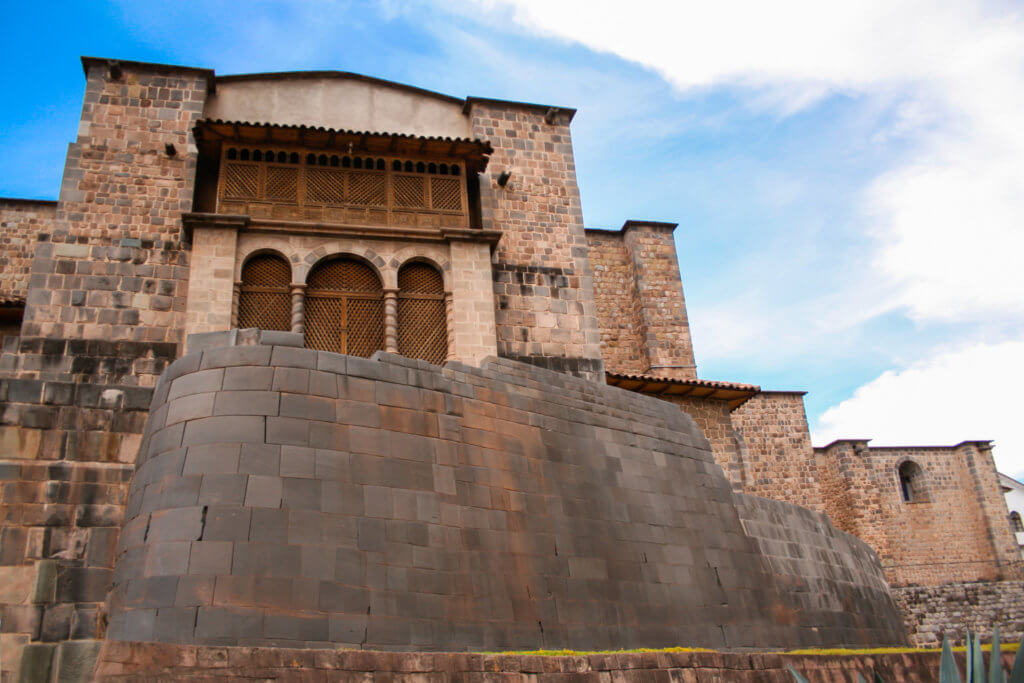
In Quechua, qori means gold and cancha is an enclosure or wall. Standing on the Avenida del Sol, about three blocks south of the Plaza de Armas, you can’t miss the Qoricancha. There is a large stone Inca wall that partly surrounds what is now a Spanish colonial church. It’s easy to tell the Inca architecture from the Spanish because the Inca stones are perfectly carved and fit together like Legos. The Spanish construction used mortar between roughly hewn stones.
When the Spanish first arrived in 1533, the wall was plated with gold, which was soon looted. From Avenida del Sol, walk uphill on Calle Arrayanniyoc. There is a great view of the Inca wall and the gardens below from Arrayanniyoc. You’ll pass the doors for the church before you walk across the plazoleta. The church still holds services on Sunday, which are free. Both inside and outside are wheelchair accessible.
You also have the option to tour the inside of the Qoricancha between 9:00 a.m. and 5:30 p.m. Tickets to enter are s/15 PEN* for adults and s/8 for students with a student ID card. Children ten and younger enter for free. There are usually guides available at the door, though they are not required for entry. You can schedule a ruins tour, which usually includes other sites in Cusco along with the Qoricancha.
*The Peruvian Nuevo Sol (PEN) is a volatile currency. Always check the exchange rate when calculating prices. At time of writing, s/15 PEN was about $4 USD.
3. Kusicancha
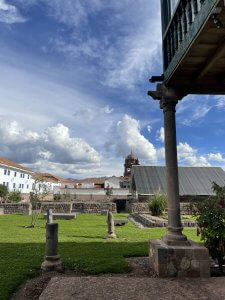
Kusicancha is now treated as a separate archeological site from the Qoricancha, though originally it was all one large temple complex. Kusicancha is directly across Calle Arrayanniyoc from the Qoricancha. There are glass walls surrounding it on three sides, so you can see it from three different angles. The entrance is on the north side, on Calle Maruri at the office where you can buy Machu Picchu tickets.
At Kusicancha you can see Inca walls, both outside and inside, plus columns and the foundations of temples. The Inca divided their world into dualities and Cusco was no exception. The upper half of Cusco was called hanan and the lower half was hurin. The Qoricancha and Kusicancha are what remains of a massive temple complex that served the hurin half of Cusco.
The streets around Kusicancha have wheelchair accessible sidewalks though there are a few stairs at the entrance on Calle Maruri.
4. Hatun Rumiyoc, a.k.a the 12 Angle Stone
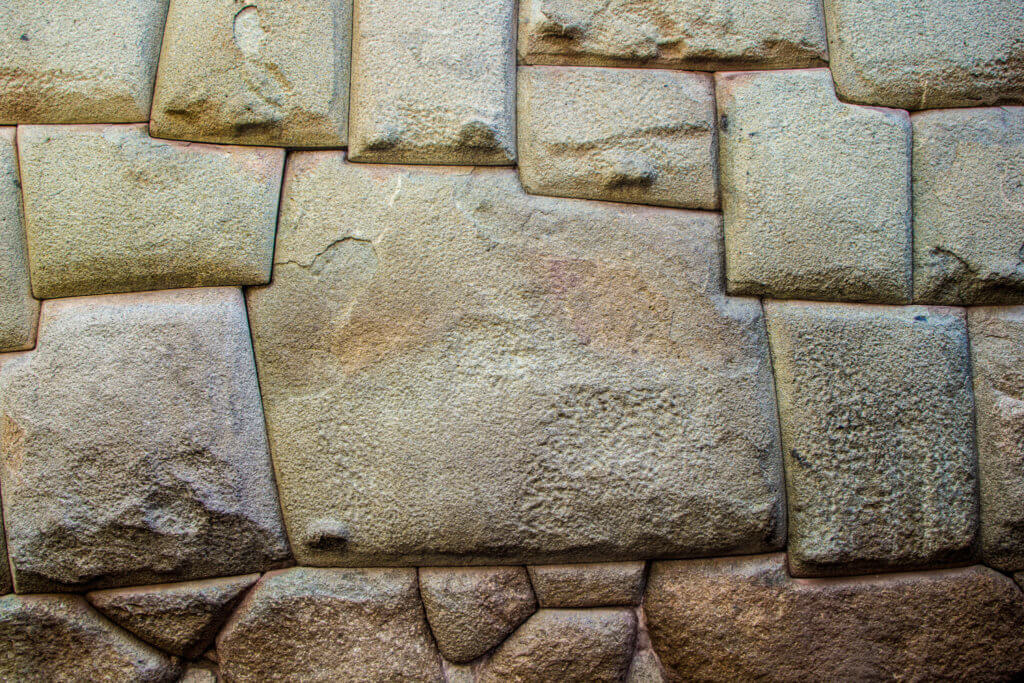
The 12 Angle Stone is one of the most famous symbols of Cusco and once you know what it looks like, you’ll see it everywhere. The Cusqueña beer bottle, souvenirs, and other architecture around town feature it prominently. In Quechua hatun means big and rumi is a stone. So, the name literally translates to Big Stone.
The Hatun Rumiyoc was perfectly carved to fit with the eleven stones that surround it. As with all Inca architecture of important buildings, no mortar was used between the stones. Despite hundreds of years of earthquakes, there are no cracks between it and any of the neighboring stones. Another marvel of the Hatun Rumiyoc is the size of the stone itself. Most Inca walls were one to two meters thick, and this is no exception. The stone weighs approximately six tonnes.
The Hatun Rumiyoc is an easy walk two blocks east of the Plaza de Armas. Start walking up Portal Belen and when the street turns to a pedestrian passageway, you’re almost there. It’s easily recognizable by the crowds of tourists having their picture taken with it. There is often a guard there as well, to ensure nobody damages it in any way. As it’s on a regular pedestrian street, it’s accessible 24/7. The street is rough stones, which makes it difficult to access in a wheelchair.
5. Sapantiana Aqueduct
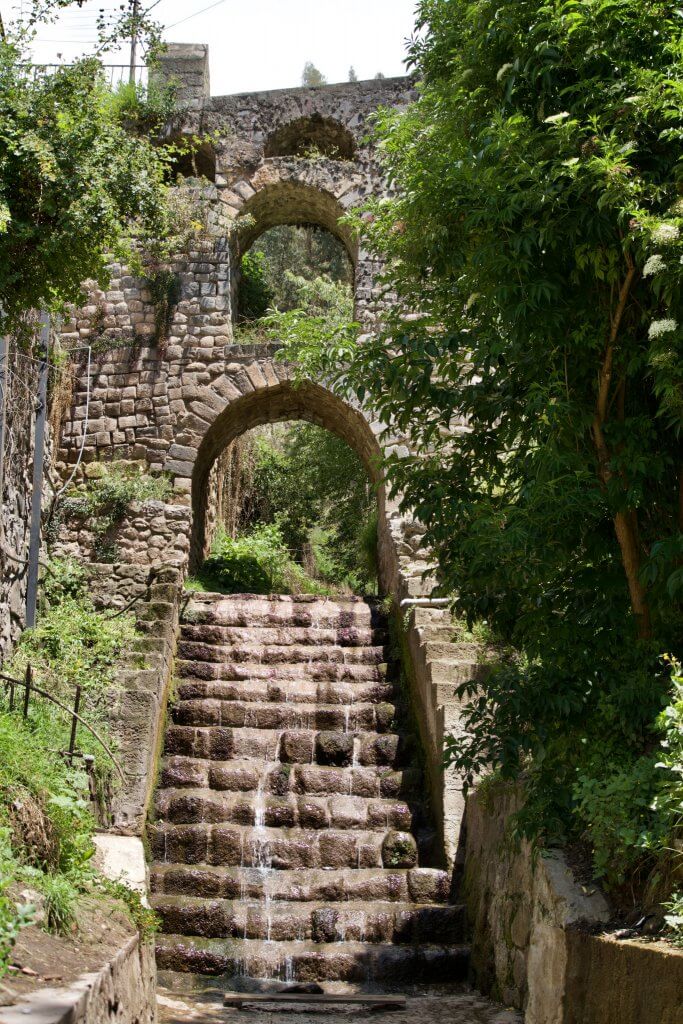
Though the aqueduct above is colonial construction, Sapantiana itself is Inca and includes a huaca. A huaca is a sacred site, usually a piece of bedrock carved for ceremonial use and there are hundreds of huacas in the Cusco area.
Every Inca city had a complex system of canals and aqueducts, carrying clean water from nearby mountain tops and glaciers. If you visit in the rainy season, you’ll see why their drainage system was just as important as bringing in clean drinking water. You can walk up the canal to see the colonial aqueduct up close, and also walk among the Inca carvings on the huaca next to the canal.
To get there, you can walk along Calle Tandapata from the San Blas neighborhood or start at Hatun Rumiyoc and walk up Calle Choquechaka. After you visit Sapantiana, walk just a bit farther to admire Calle Siete Borreguitos, which means Seven Little Lambs Street. It’s a picturesque set of stairs full of flowers that leads up to the back entrance of Sacsayhuaman. Calle Tandapata is wheelchair accessible from the San Blas market, but Calle Choquechaka and Calle Siete Borreguitos are not.
6. Sacsayhuaman
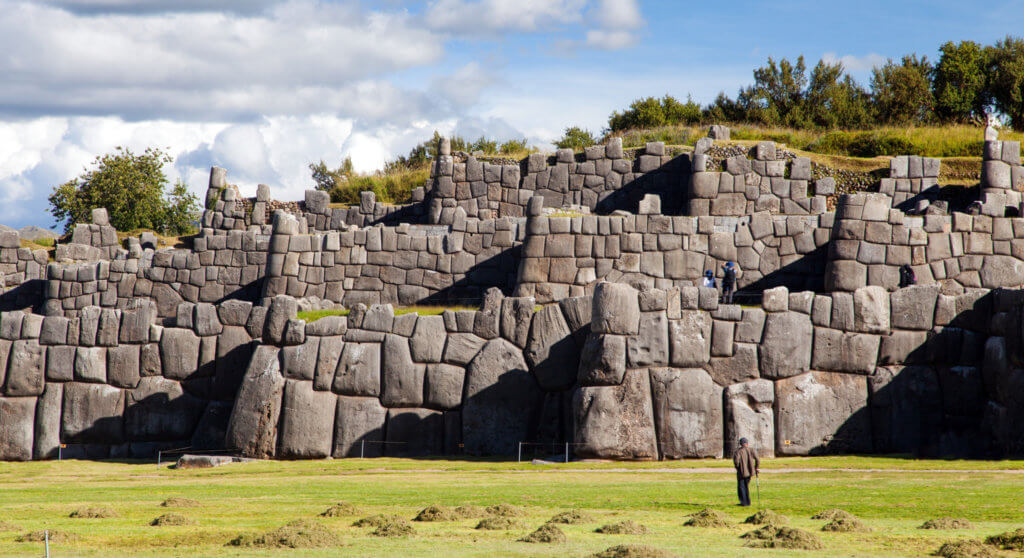
You can see Sacsayhuaman from just about anywhere in Cusco. It’s the giant Inca ruins on the bluff overlooking the city. The archeological site is called a fortress in many guidebooks, though it was actually the sister temple to the Qoricancha. Just as the Qoricancha served the hurin half of Cusco, Sacsayhuaman served the hanan half of the capitol city. Archeological studies at Sacsayhuaman have unearthed ceramics and artifacts from throughout Tahuantinsuyu. The obvious offerings and sacrifices led archeologists to the conclusion that this was a ceremonial temple, not a military fortress.
At the top of Calle Siete Borreguitos, turn right and continue up the pedestrian Pumacurco. This leads you to the Sacsayhuaman back gate. There are often guides available at the gate, though they are not required to enter the site. You do not need a ticket at this entrance. Follow the path along the stream, which goes along the side of Sacsayhuaman. You will walk by massive stones, which easily give the impression of a military fortress. Keep following the path along the stream, which is lined with original Inca walls.
This route is all uphill and involves a lot of stairs. It should not be attempted if you are still acclimatizing to the altitude. Alternatively, you can take a taxi around to the top entrance of Sacsayhuaman and walk back down to Cusco, following the stream to Pumacurco and Calle Siete Borreguitos. Neither route is wheelchair accessible.
If you would like to enter Sacsayhuaman, the best way is with a guided tour. Sacsayhuaman is part of the Boleto Turístico de Cusco, which costs s/70 PEN (about $18 USD). The BTC includes several Inca archeological sites and museums in Cusco and can be bought at any of those sites. Tours with several archeological sites on the schedule usually include the BTC but be sure to check before reserving.
7. Monkey Temple
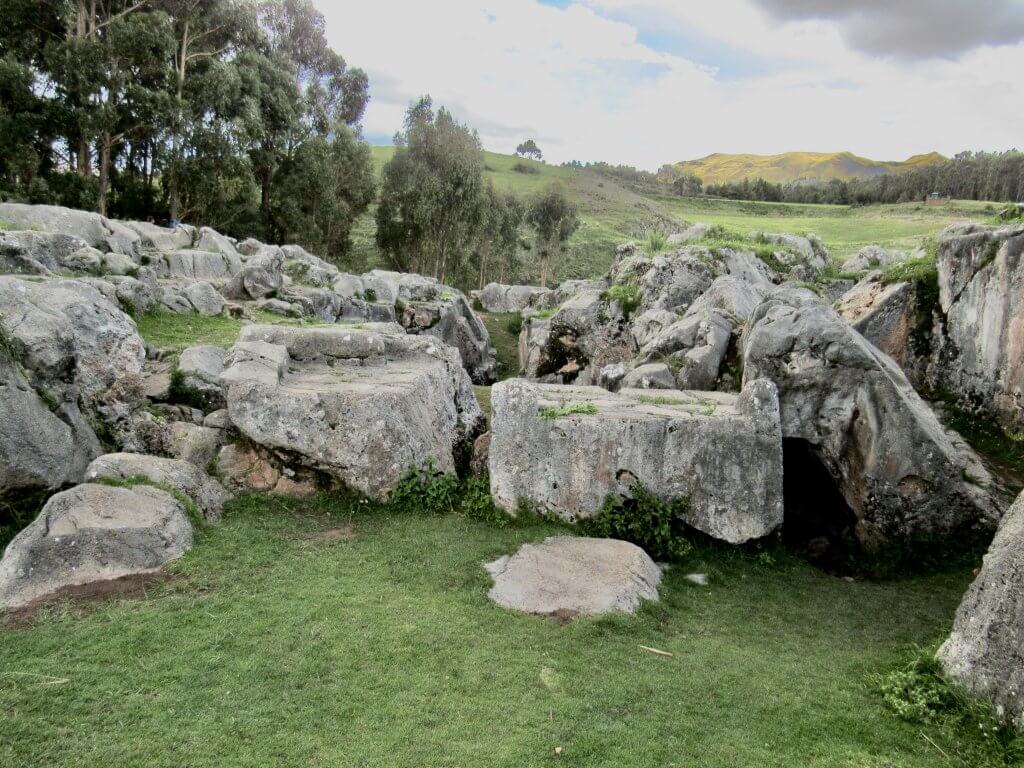
There are two parts to this site. Next to a grove of eucalyptus trees are the foundations of several small buildings. Above those, along a section of the Inca trail, called Qhapaq Ñan, are a jumble of giant carved boulders and large niches carved into the bedrock. Walk down among the boulders and you’ll see rocks with carvings that look like snakes and what was once the carving of a monkey. In the cave below these carvings is a stone shaped like a human heart. The limestone has been badly weathered by the centuries so some of the carvings are difficult to discern. The current Quechua name of the site is Kusilluchayoc, though it is not known if that was the original name.
The Qhapaq Ñan is the system of trails that link all of Tahuantinsuyu and radiate out from Cusco to the four regions of the Inca’s territory. From the Plaza de Armas, walk up past Hatun Rumiyoc and follow the Cuesta de San Blas up to the San Blas church. From the north corner of the church, walk uphill along the pedestrian Calle Suytuqhatu, which is the Qhapaq Ñan. Follow it up past Mirador El Camino del Inca and cross Avenida Circunvalación. This is the road that leads up to the archeological sites on the City Tour and continues on to Pisac.
The Qhapaq Ñan is two to three meters wide and still lined with original Inca walls. Follow it up past two large groves of eucalyptus trees to the Monkey Temple, from where you can also see the Temple of the Moon. There are no signs or restoration work at the Monkey Temple, though it does show up on Google Maps.
8. Temple of the Moon
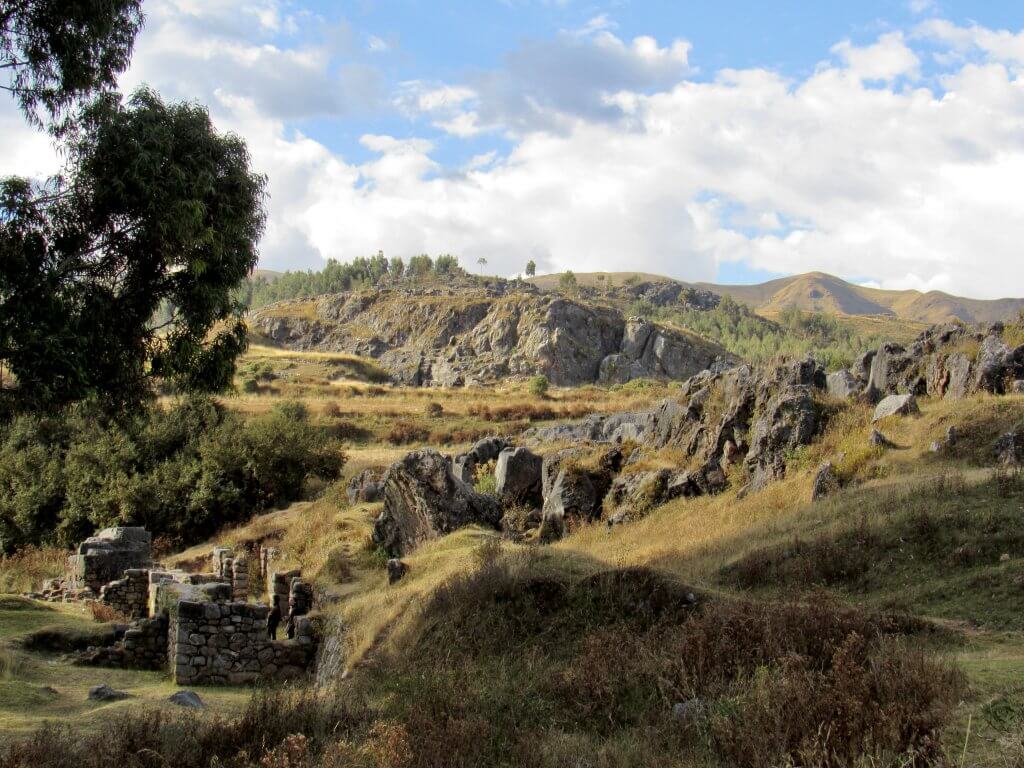
Keep walking up the Qhapaq Ñan past the Monkey Temple and you’ll see the Temple of the Moon, a giant hill of limestone covered with stairs and other carvings. There are several caves, only one of which is open to the public. The side nearest town is fenced off but walk along the perimeter of the fence to see dozens of sets of stairs carved into the hillside, along with the foundations of several buildings. This is a site that the Ministry of Culture is actively restoring and there is a guardian on side to ensure that people don’t hop the fence.
Continue around to the left and walk up the side of the hill. The top of the Temple of the Moon is also covered with niches, steps and other shapes carved directly into the bedrock. Due to the nature of limestone, the carvings have all been badly weathered. Walk carefully down the other side and climb the giant steps into the cave. Inside are shelves carved into the cave walls that are still used for rituals and offerings. The shelves are usually covered with flowers, coca leaves and burning incense. If you visit on Inca holidays like Inti Raymi on June 24th or Inca New Year on August 1st, you are likely to see Cusqueñians making offerings to the Pachamama in the cave and around the Temple of the Moon.
To minimize walking, you can take a taxi up to the Temple of the Moon through the neighborhood Ayuda Mutua. The streets in this area do not have names, but you can ask for a taxi to Casa De La Gringa or Hostal Templo De La Luna. A small area near the end of the road is wheelchair accessible on dirt trails.
9. Inkilltambo
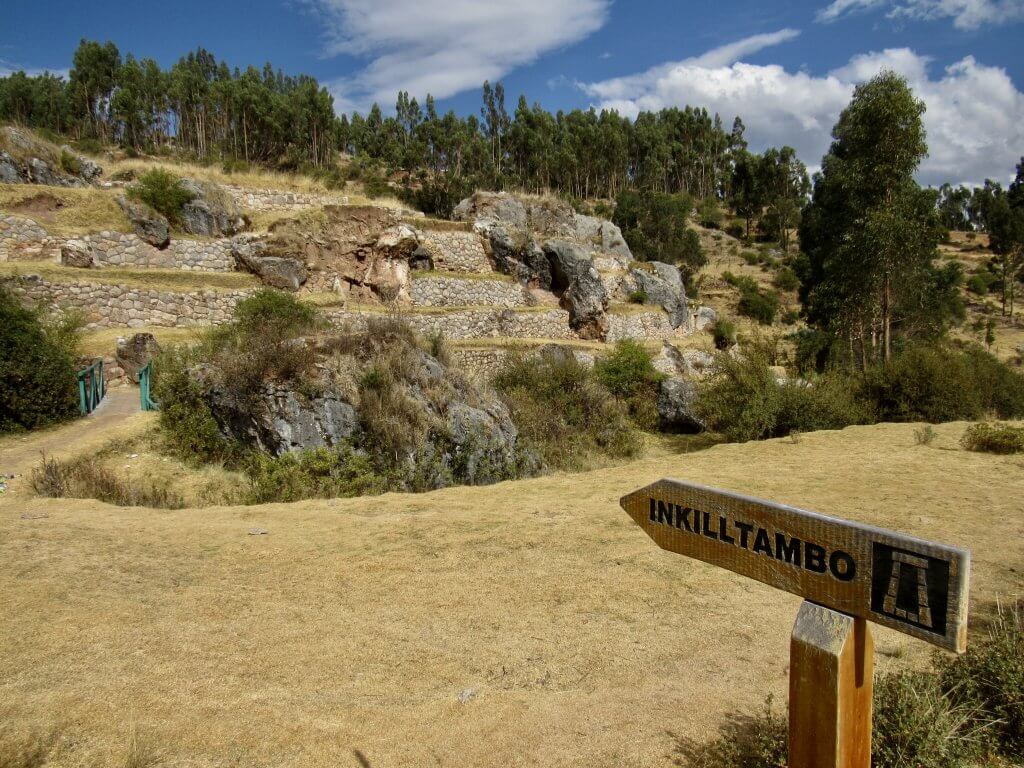
This is a complete Inca city that the Peruvian government has only recently started to restore. In Quechua inkill is a garden and tambo is a place to rest. Inkilltambo has the signature wide agricultural terraces of Inca construction, along with perfect examples of how Inca engineers used bedrock to anchor many walls. Inca architecture frequently used natural rock as part of their constructions, rather than remove or flatten what was naturally there and then build on top.
Inkilltambo has one of the best examples of a ccolca, which is the storage that the Inca built to preserve crops. You can still see the ventilation system used to keep preserved food cool and dry. There is a sign next to the ccolca but the explanation is only in Spanish. There is only one other sign, at the entrance to the site, which also only in Spanish.
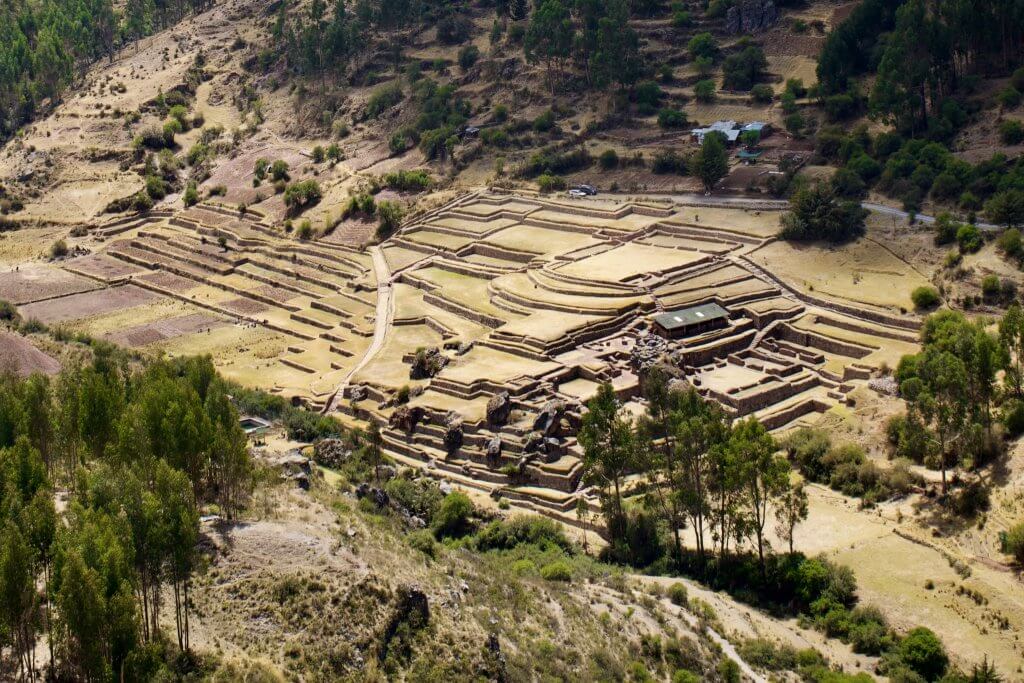
This site requires about an hour hike or a taxi from the historical center. You can walk or take a taxi to the trailhead on Avenida Chinchaysuyu. This is almost directly uphill from the Plaza Real mall. You can also follow the Qhapaq Ñan past the Temple of the Moon, which will take you to a hillside above Inkilltambo. There are dozens of trails down through a forest of eucalyptus and pine trees to Inkilltambo.
There is another route that requires a taxi, which can take you to the top of the ruins, to minimize walking. The road does not have a name, so you’ll need to find a taxi driver who is familiar with Inkilltambo. Even if you take a taxi to the top of the ruins, the area is not wheelchair accessible.
10. Inca kilns & Huchuy Choquequirao
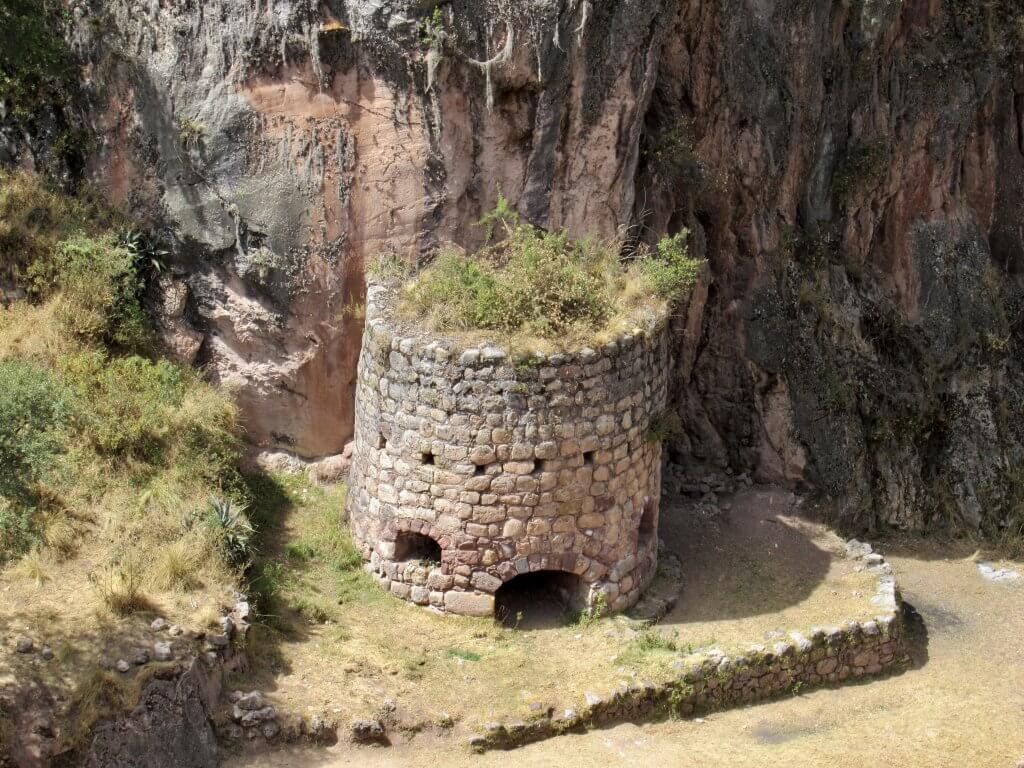
Of the two Inca kilns, only one has been restored and is about four meters high. It’s built against the base of a cliff and has three main openings, the largest right at ground level. About halfway up is a series of small holes for ventilation. This is where some of the best ceramics of Tahuantinsuyu were made. The kilns are easily viewed from the trail between Inkilltambo and Avenida Chinchaysuyu.
In the same area, closer to town is Huchuy Choquequirao. In Quechua, huchuy means small and it is significantly smaller than the more famous Choquequirao near Machu Picchu that you can visit with a multi-day trek. Huchuy Choquequirao is a stack of circular terraces on the south side of the trail. It was used as an observatory and as a ceremonial site for rituals related to the stars and the agricultural cycle. The trail from Avenida Chinchaysuyu is rough, making it very difficult to access in a wheelchair.
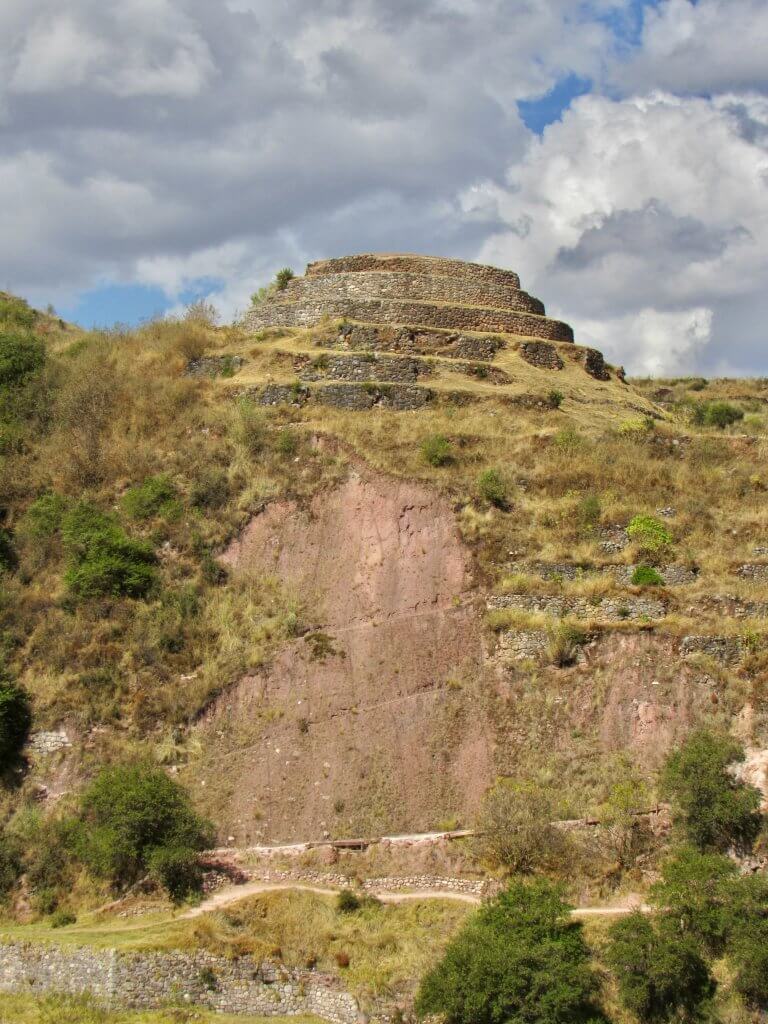
As you walk around Cusco, you’ll see innumerable Inca walls, fountains and other constructions. If you venture out of Cusco, you’ll find the whole region covered with Inca terraces, cities and temples. The best place to start is the Sacred Valley, which lies between Cusco and Machu Picchu.


